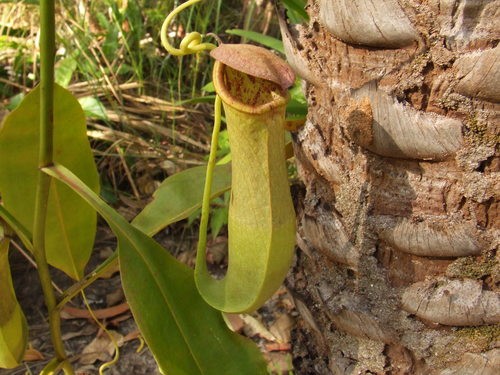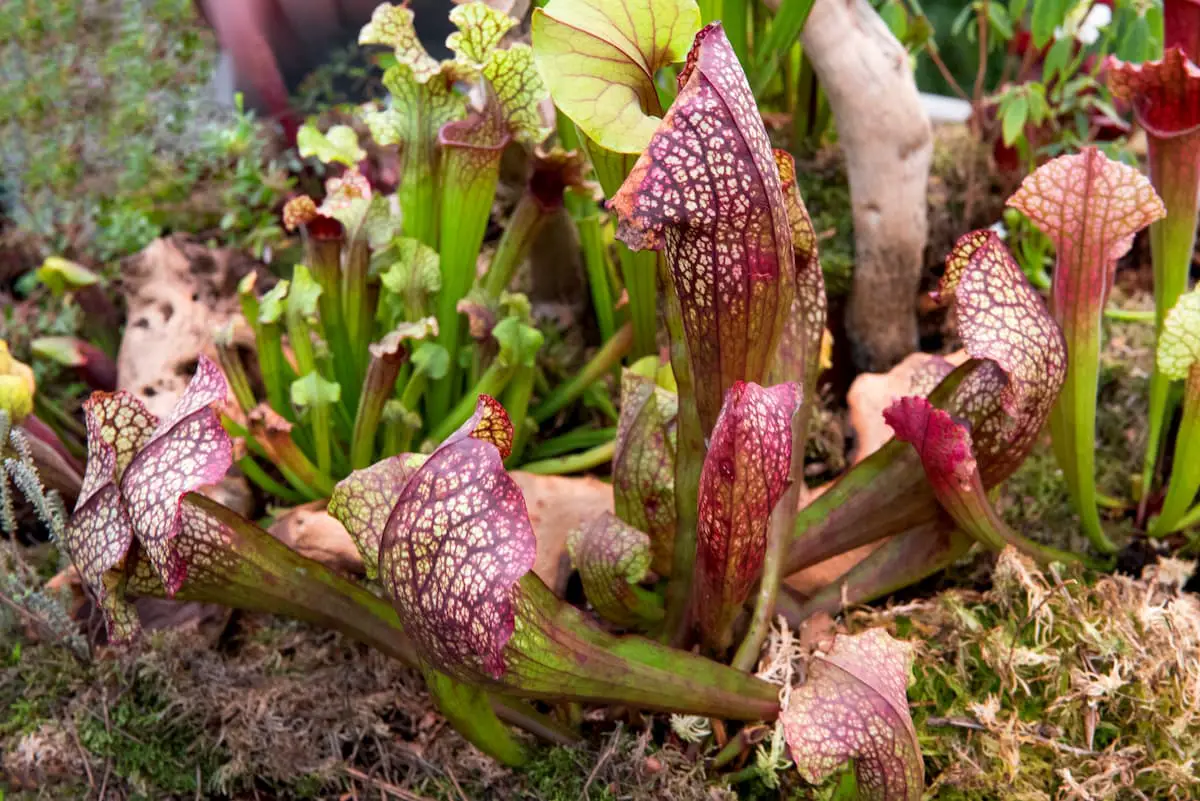Are you looking for a way to grow pitcher plants in your home? If so, you’ve come to the right place! In this blog post, we’ll provide an overview of the basics of creating a pitcher plant soil mix that will help ensure that your plants thrive. Read on to discover how to create the perfect environment for these spectacular carnivorous beauties.
Understand the Requirements of a Carnivorous Plant Soil Mix
Before you begin to create the perfect soil mix for your pitcher plant, it is important to understand the requirements of a carnivorous plant soil mix. Carnivorous plants require soil that preserves moisture and has good drainage. Common elements in carnivorous plant soil mixes include sphagnum moss, peat moss, orchid bark, perlite, and horticultural sand. Each species requires its own specific blend, but most carnivorous plants should be grown in some mix of peat moss, perlite or sand. Generally, a 50:50 ratio of peat to sand is recommended for growing carnivorous plants. However, the ratio is not necessary and you can use a 1:1 or 2:1 mix of long sphagnum fiber and silica sand or 1:1 peat. It is important to note that carnivorous plant soil mixes should be kept free of fertilizers and other contaminants as these can harm the plants. A perfect mix for carnivorous plants should contain equal parts peat moss and perlite and should have a pH between 3.5 to 4.5. Additionally, organic matter can be added to provide additional nutrients and minerals for the plants.
Research Different Types of Pitcher Plant Soil Mixes
It is important to understand the needs of carnivorous plants before selecting a soil mix for them. Pitcher plants require soil that is moist and has good drainage, so it is important to select the correct materials to achieve this. Common elements for pitcher plant soil mixes include peat moss, sphagnum moss, orchid bark, perlite and horticultural sand. It is best to use a combination of two or more of these materials in a 1:1 or 2:1 ratio. For those looking for a professional mix, Nepenthes offers a custom-blended potting soil specifically designed for pitcher plants. This mix consists of 5 parts peat moss, 3 parts silica sand and 2 parts perlite by volume. It is also important to add nutritious soil components such as organic material, sand and peat moss to the mix. This will ensure that the soil contains the necessary nutrients and minerals for the pitcher plant’s growth.
Choose the Right Ingredients for Your Mix
Once you understand the basic requirements of a carnivorous plant soil mix, it’s time to choose the right ingredients for your mix. The most important ingredient is sphagnum peat moss, which is a highly acidic and nutrient-poor soil medium. You’ll also need perlite and horticultural sand to create a well-draining soil mix. To enhance the soil with organic material, you can add a small amount of organic peat or aged compost. When choosing ingredients for your mix, make sure to look for high-quality products that are free from added chemicals or fertilizers.
Create a Balanced Mix of Nutrients and Minerals
Now that you understand the requirements of a carnivorous plant soil mix, it’s time to create the right balance of nutrients and minerals. Most pitcher plants need a nutrient-poor soil that is slightly acidic and well-draining. A good mix would be three parts sphagnum peat moss to one part perlite and one part horticultural sand. This mix of peat moss and perlite will provide the ideal texture and drainage for the plant, while still retaining some moisture. Additionally, the horticultural sand will help to aerate the soil, ensuring the roots have plenty of oxygen. For an extra boost, you can also add organic matter like compost or manure to your mix. This will provide essential nutrients for your pitcher plant and help to encourage healthy growth.
Create the Right Texture and Drainage for the Soil
Now that you understand the necessary nutrients and minerals for your pitcher plant soil mix, it’s time to focus on the texture and drainage. The texture of the soil should be such that it is able to hold enough moisture for the plant’s needs, yet allow for air to pass through. In addition to regulating moisture levels, the soil must also have good drainage so water can easily pass through without becoming stagnant. This can be achieved by adding ingredients such as perlite, coarse sand, and peat moss. These materials will also help to improve aeration in the soil, which is essential for the health of your pitcher plant.
Add Organic Matter to Your Mix
Now that you have selected the right ingredients for your pitcher plant soil mix and created the correct texture and drainage, it is time to add organic matter to your mix. Organic matter helps to create soil structure, improve nutrient availability, and provide beneficial microorganisms. Common organic matter elements used in pitcher plant soil include peat moss, sphagnum moss, orchid bark, and horticultural sand. Peat moss is a natural source of organic matter, containing dead animals and plants. It is often mixed with other ingredients and helps to retain moisture in the soil. Sphagnum moss is a great choice for providing aeration and improving drainage. Orchid bark helps to break up clay soils and provides additional aeration. Horticultural sand helps to break up clay particles while providing additional drainage. Mixing these elements in the correct ratios will give your pitcher plant the perfect soil mix for healthy growth.
Test Your Soil Mix for Acidity and Nutrient Levels
After creating your pitcher plant soil mix, it’s important to test the soil for the correct acidity and nutrient levels. This is necessary for optimum growth and health of your pitcher plant. To test, place two tablespoons of the soil in a bowl and add half a cup of vinegar. If the mixture fizzes, it means that the soil is too alkaline and you will need to adjust the ingredients to make it more acidic. You should also test the levels of nitrogen, phosphorus and potassium using an at-home soil testing kit. A balanced mix of these nutrients is essential for your pitcher plant’s success.
Store Your Soil Mix Properly
Once you have created the perfect soil mix for your pitcher plant, it is important to store it properly. You should keep the mix in a cool, dry place, away from extreme temperatures and humidity, and make sure it is in an airtight container. If you use a plastic bag, make sure it is sealed tightly. You should also label the bag with the ingredients and date. Storing your soil mix properly will ensure that it will remain fresh and usable for up to a year.

Choose the Best Container for Your Pitcher Plant
After selecting the right soil mix for your pitcher plant, it’s time to choose the right container. The best container for your pitcher plant will depend on the type of soil mix you are using. If you are using a standard potting soil mix, you should select a container with drainage holes to ensure adequate drainage. For plants grown in a shallow tray of water, look for a container without drainage holes to keep the soil from draining too quickly. If you are using a terrarium, choose a glass container with enough space for your plant and plenty of airflow. It’s important to select the right container for your pitcher plant in order to ensure optimal growth and health.
Transplanting Your Pitcher Plant into the Soil Mix
Once you have the perfect pitcher plant soil mix, it’s time to transplant your plant. Start by gently removing the plant from its old pot. If the root ball is very tight, you may need to loosen the roots with your fingers before carefully lifting it up. If your plant is large, you may need to use a potting scoop or spoon to help you. Once they’re separated, use carnivorous plant potting mix to fill pots that are about two inches larger than the previous ones. If you’re using a pot with a drainage hole, place a layer of gravel at the bottom before adding soil. Then, carefully transfer your pitcher plant into the new pot and fill in around it with more soil. Make sure the plant is firmly in place and there’s no air pockets around the root ball. Finally, water your plant until it’s evenly moist throughout.



Leave a Reply